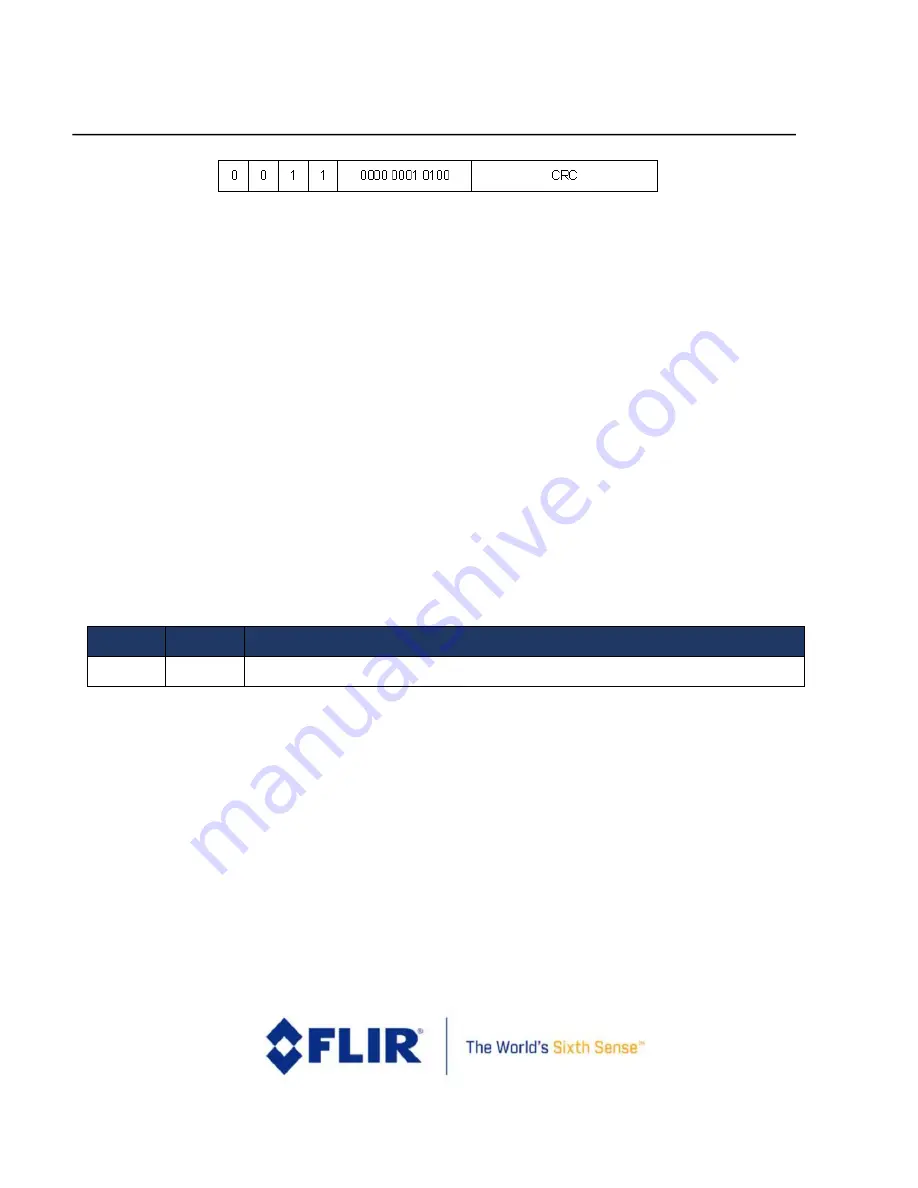
FLIR
LEPTON® Engineering Datasheet
The information contained herein does not contain technology as defined by the EAR, 15 CFR 772, is publicly available,
and therefore, not subject to EAR. NSR (6/14/2018).
Information on this page is subject to change without notice.
Lepton Engineering Datasheet, Document Number: 500-0659-00-09 Rev: 203
57
(b)
Example showing the packet header for line 20 of segment 3
The CRC portion of the packet header contains a 16-bit cyclic redundancy check (CRC), computed using the
following polynomial:
x
16
+ x
12
+ x
5
+ x
0
The CRC is calculated over the entire packet, including the ID and CRC fields. However, the four most-significant
bits of the ID and all sixteen bits of the CRC are set to zero for calculation of the CRC. There is no requirement for
the host to verify the CRC. However, if the host does find a CRC mismatch, it is recommended to re-synchronize the
VoSPI stream to prevent potential misalignment.
At the beginning of SPI video transmission until synchronization is achieved (see
), and in
the idle period between frames, Lepton transmits discard packets until it has a new frame from its imaging
pipeline. As shown in
, the 2-
byte ID field for discard packets is always xFxx (where 'x' signifies a “don't
care” condition). Note that VoSPI
-enabled cameras do not have vertical resolution approaching 3840 lines
(0xF00), and therefore it is never possible for the ID field in a discard packet to be mistaken for a video line.
Figure 33 - Discard Packet
ID
CRC
Payload
xFxx
xxxx
Discard data (same number of bytes as video packets)
For video packets, the payload contents depend upon the selected bit resolution:
▪
For Raw14 mode (the default case), the payload is 160 bytes long. Excluding telemetry lines1, each packet
contains pixel data for all 80 pixels in a single video line (with AGC disabled, the first two bits of each
pixel's two-byte word are always set to 0; if AGC is enabled, the first eight bits are set to 0).
▪
For RGB888 mode, the payload is 240 bytes long. Excluding telemetry lines (which are invalid in RGB
mode), each packet consists of pixel data for a single video line (3 bytes per pixel).
Each case is illustrated in the following payload encoding figures.






























